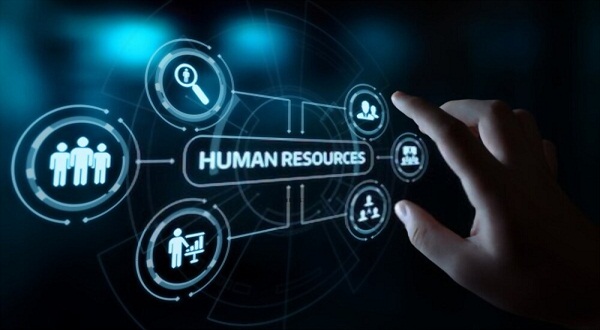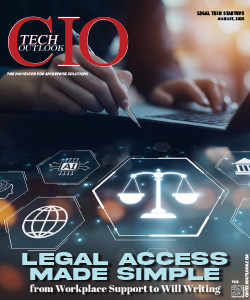All You Need To Know About Human Resource Management
Digvijay Singh kanwar | Tuesday, 25 August 2020, 12:21 IST

HRM or Human Resource Management is concerned with the management of humans in an organization. It is defined as a management function that deals with the hiring, motivating and maintaining the workforce in an organization. Let us understand this in detail.
The conception of Human Resource Management
In India, the evolution and further development of worker or personnel management occurred due to government intervention to stop the rampant exploitation of industrial workers.
In the early 20th century, industrial workers in India suffered large scale exploitation and suppression at the hands of their owners. Malpractices such as non-payment of wages and inhumanly long working hours were prevalent during that time.
The frequent oppression by the industry owners also resulted in many worker strikes and walkouts, which further impacted production.
Finally, in 1931, The Royal Commission of Labour in India abolished the ‘Jobber’ system of employment and appointed labour officers at various industrial enterprises to perform recruitment functions and focus on the overall welfare and well-being of the workforce. After independence, the labour officer became known as the personnel manager and came under the legislation of Section 49 of the Factories Act, 1948.
Over the years, this position gradually evolved into what we call today as Human Resource Management.The introduction of 5-year plans led to rapid industrialization and opening up of the public sector, which further accelerated the growth and professionalization of Human Resource Management.
Scope of HRM
The scope of HRM can be categorised into the following features:
- Human or labour resource: This feature deals with the planning of manpower,recruitment and selection, placement, induction, remuneration, productivity, training & development, performance appraisal, promotion and transfer.
- Welfare: This feature deals with the amenities and working conditions like safety security, work environment, transport, housing, restroom, creches, canteen service, medical help, education, cultural and recreation facilities.
- Industrial relations: This feature deals with the relationship between the company and its employees. This includes grievance handling, joint consultation, employee-management relations, collective bargaining, negotiation and disciplinary actions.
Objectives of HRM
The primary goal of HRM is to attain maximum employee development, cohesive work relations between the employees and employer and to mould the human resources as per the available physical resources of the company.
- Social objectives: They deal with managing human resources in a socially and ethically responsible manner by ensuring ethical and legal compliance. It also aims to preserve and promote the overall welfare and well-being of the community.
- Organizational objectives: They deal with achieving the goals or objectives of the company. The primary purpose of Human Resource Management is to fulfil the purpose of the organization. If it fails to do so, it will become nonexistent in the long term. It ensures organizational effectiveness and improves job satisfaction among employees.
Nature of HRM
The nature of Human Resource Management is much broader in scope and in practice, right from the level of an individual employee to the level of an entire organization.
It involves implementing various programmes, activities and functions to maximize the efficiency and productivity of the employees as well as the company as a whole.
It includes proper incentives, timely guidance, mutual involvement, training and development activities, career planning, etc., for the overall growth and engagement of the employee.
The nature of HRM is such that it applies to every level of hierarchy in the company; workers, managers, officers, etc.. It views every worker as an individual and provides individual facilities and services to enhance employee satisfaction. HRM also safeguards the objectives of the company by ensuring that the workforce performs as expected to achieve the desired objective of the company.
Functions of HRM
The functions of HRM can be broadly divided into 2 types: Managerial and Operative.
- Managerial functions: These functions deal with managing the workforce. This involves planning, organizing, directing and controlling the workforce.
Operative functions: These functions could be divided into 5 categories, namely:
- Procurement functions: These deal with the recruitment, selection, induction and placement of the most ideal candidates for the organization.
- Development functions: These functions deal with improving the skills of the employees by imparting proper training & development, and providing career development opportunities.
- Compensation functions: They deal with providing proper wages and remuneration to the employees.
- Integration functions: These are all about motivating employees, addressing their grievances and ensuring more engagement and transparency between the management and the workforce.
- Maintenance functions: They deal with the safekeeping of employee records and managing industrial relations.
Importance of HRM
HRM plays an important role in managing the organization as well as its employees. It helps the organization with achieving targets, proper utilization of human resources, implementing the latest technology, accommodating globalisation and ensuring employee development.
HRM helps employees by providing them with opportunities, promoting teamwork and team spirit, creating the right work environment and maintaining healthy relations between the employees and the company’s management.
New HRM trends
The HRM has to evolve constantly with the changing business scenario and HR practices. Strategies that may have worked perfectly well for the company in the past may not be feasible now. And, the Human Resources department may have to bring in changes in the Human Resource Management to ensure profitability and long term sustainability of the organization. Embracing the new HR trends is the best way to ensure this. The growing trends in HRM include:
- Actively embracing technology to facilitate efficient management
- Incorporating adaptability and flexibility into the company
- Developing unique strategies to acquire the best talent from the market
- Cultivating leadership among employees via learning and development activities
- Recognizing the value of the workforce as the true drivers of the company
Competencies required for efficient HRM are as follows:
- Keeping the employees engaged with continuous innovation and change
- Creating future leaders
- Developing an effective rewards and recognition system
- Empowering employees with proper learning and development
Limitations of HRM
There are 5 main limitations of Human Resource Management. They are:
- New concept: Many industry observers are of the opinion that the concept of human resource management originated only recently. Therefore, it lacks the backing of proper research and academics to approve of it as a tried and tested innovative concept that provides substantial long term benefits for the organization.
- Lack of support: Effective HRM requires the sustained support of the top management of the organization to ensure long term and sustained positive results. Passive attitude and lack of support will only make HRM ineffective and inefficient.
- Incorrect implementation: Most organizations don’t see much HRM results due to the incorrect or half-hearted implementation of this concept. This kind of implementation is also the main reason behind an inefficient and unproductive workforce.
- Inadequate information: Many companies do not possess even basic information about their employees. This mainly happens due to improper collection of data or information during induction. This lack of information hampers an effective HRM implementation.
- Insufficient development programmes: Because of insufficient employee development programmes, employees remain clueless about future growth opportunities within the company. Additionally, employees have limited options to enhance their skills while on the job. This leads to the overall failure of the HRM.
Human Resource Management has a broad scope and application. It has evolved gradually over the years to take centre stage in the overall development of the organization. Today, it is an indispensable part of an organization. And its effective implementation can spell the difference between the success and failure of an organization. For long-term sustainability productivity and growth of your business, an organization must effectively implement Human Resource Management.
About Author: Digvijay Singh Kanwar is a professional content writer and digital marketing expert and he loves to write about finance and tech-based articles. You can contact him on digvijaykanwar96@gmail.com




